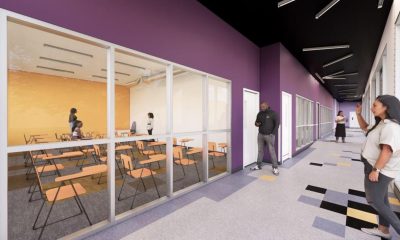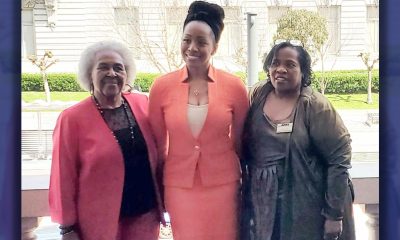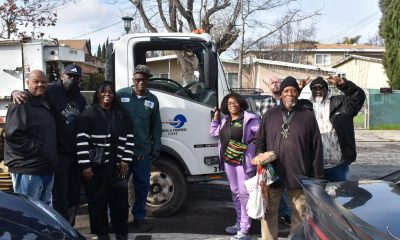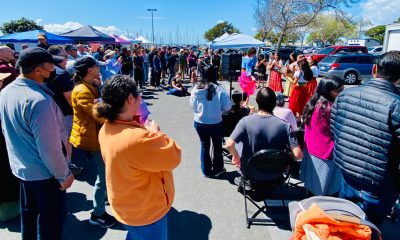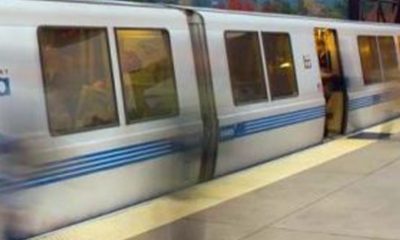BayCityNews
Undoing the Past: Lawmakers Seek to Mend California Neighborhoods Sliced by Highways
A new select committee in the California Legislature will explore ways the state can reconnect neighborhoods that decades ago were torn apart by interstates and highways. During the nation’s interstate highway construction boom in the 1950s and ’60s, numerous urban neighborhoods were sliced through, often isolating residential areas largely populated by minorities and low-income residents from surrounding communities — and from economic opportunity.
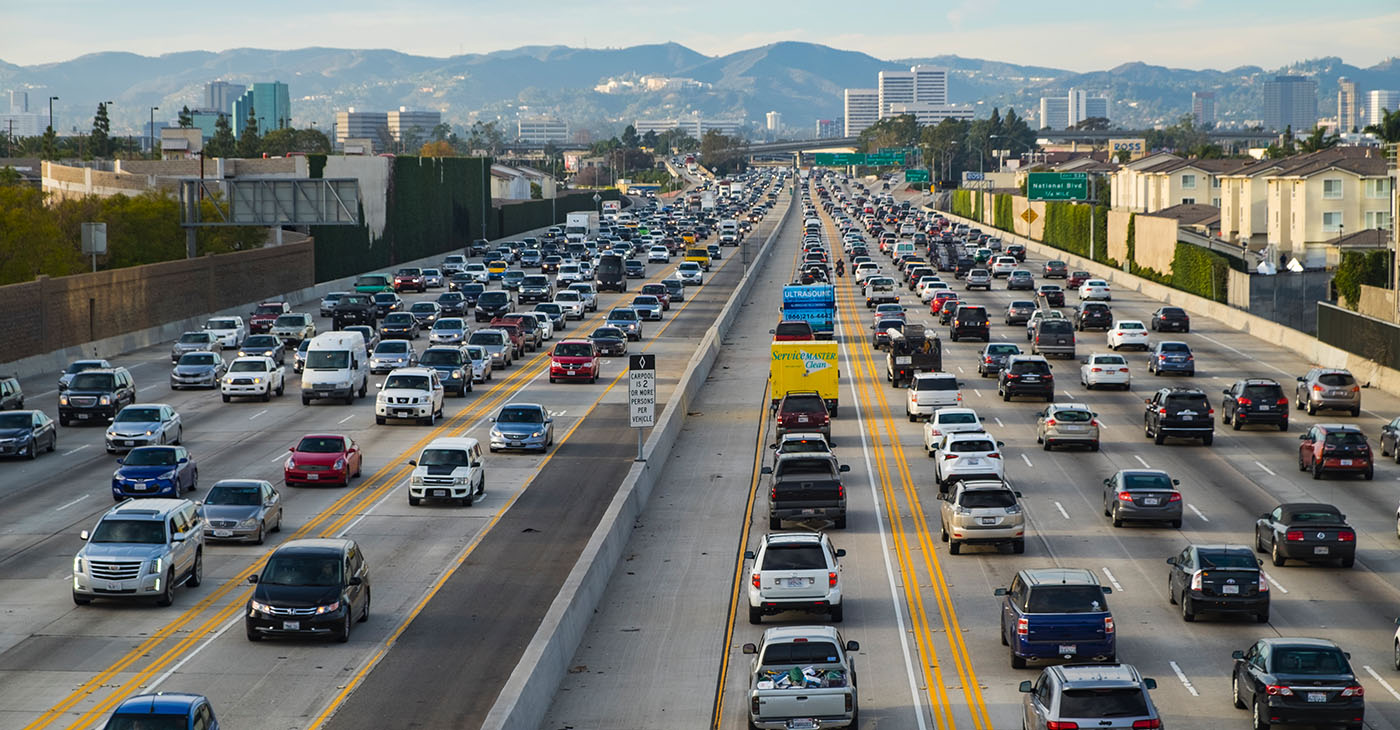
By Wendy Fry
CalMatters
A new select committee in the California Legislature will explore ways the state can reconnect neighborhoods that decades ago were torn apart by interstates and highways.
During the nation’s interstate highway construction boom in the 1950s and ’60s, numerous urban neighborhoods were sliced through, often isolating residential areas largely populated by minorities and low-income residents from surrounding communities — and from economic opportunity.
More than 1 million people lost their homes, researchers have estimated. Federal transportation officials noted that in the first 20 years after the 1957 Federal Highway Aid Act launched nationwide highway construction, more than 475,000 households were displaced.
Now local and state governments across the nation are exploring ways to undo some of that harm by finding ways to re-link some of those neighborhoods. On Thursday, California’s Assembly Speaker Anthony Rendon appointed Assemblymember David Alvarez, a Democrat from San Diego, to chair a new Select Committee on Reconnecting Communities.
“Many communities, like Logan Heights and Sherman Heights, were devastated by the superhighway system,” Alvarez said in an interview, referring to San Diego neighborhoods. “I intend to focus the committee’s work on reconnecting neighbors and creating new opportunities, like park space and affordable housing.”
Roadways vs neighborhoods
While the superhighway system connected cities and metro areas across the nation, allowing drivers and shippers to more efficiently traverse the country, communities of color and other under-resourced neighborhoods experienced fewer of the benefits from that system — such as interstate exits and transit hubs — while suffering the greatest harm, including isolation from job centers, more air pollution and the devastation of local business areas, experts say.
Gustavo Dallarda, Caltrans district director for San Diego and Imperial counties, said the state transportation agency is seeking new ways to make transportation part of the community “rather than something that runs through it.”
“Caltrans is evolving from prioritizing transportation efficiency to a people-first organization,” he said in an interview. “We have a heightened awareness of the impact our infrastructure has had on communities throughout the state … including those in underserved neighborhoods.”
Federal money is on its way. U.S. Sen. Alex Padilla on Tuesday announced California will receive nearly $36 million from a pilot program aimed at reconnecting communities on a national level.
The federal program will fund planning, design, demolition, and reconstruction of street grids, parks and other infrastructure to reconnect communities divided by transportation infrastructure.
Removing barriers
Projects already slated for federal funding include:
- $30 million for the City of Long Beach to reconfigure West Shoreline Drive to remove a roadway barrier and improve access and connectivity between Downtown Long Beach and a public open space;
- $2 million to the City of Pasadena for future redevelopment of the I-710;
- $2 million to the City of San Jose to convert Monterey Road from a motor highway to a “grand” boulevard with dedicated bike lanes and “urban greening.”;
- $680,000 for a Caltrans Project in Oakland to explore alternatives for reconnecting communities along the I-980 corridor;
- $600,000 to the City of Fresno for a pedestrian bridge that would cross California State Route 99 and connect Parkway Drive and Roeding Park.
Across the nation, some cities are considering ripping up parts of aging highway systems to make room for open spaces to reconnect once-separated neighborhoods. In California, state officials said they are looking for ways to reconnect neighborhoods by building parks and community spaces along freeways.
Activists nationwide are urging that such plans include input from the community members most affected.
“The benefits unlocked by taking down an expressway must be channeled to the members of the current community. As more and more state and local agencies take up these projects, it is essential that they achieve the best possible outcomes,” according to Congress for the New Urbanism, a national nonprofit group.
In San Diego a groundbreaking in early March will provide an example. The project will become a community space and park along Interstate 5 at Boston Avenue, in the Barrio Logan neighborhood. The mostly Latino community is already known for its extensive collection of large Chicano murals painted on pillars of the Coronado Bridge, which bisects a key community park.
In coming months, the state’s new select committee will hold public informational hearings in San Francisco, Los Angeles, and San Diego to discuss how local and national actions damaged communities. The committee will use these hearings to develop legislative and budget proposals to address systemic injustices and inequality, according to Alvarez’s office.
Copyright © 2023 Bay City News, Inc. All rights reserved. Republication, rebroadcast or redistribution without the express written consent of Bay City News, Inc. is prohibited. Bay City News is a 24/7 news service covering the greater Bay Area.
###
WendyFry/CalMatters0735a03/01/23
EDITORS PLEASE NOTE: This story was originally published by CalMatters. Please use the original link when sharing: https://calmatters.org/california-divide/2023/02/reconnecting-communities/
/www/bcn/general/03/newsclip.23.03.01.07.38.01.1.txt
Bay Area
Arrests Made at People’s Park as Preparations For Construction on Site Begin Again
Seven people were arrested early Thursday morning at Berkeley’s People’s Park as fencing was put up in preparation for a controversial construction project to build housing for students and formerly unhoused people on the public park.
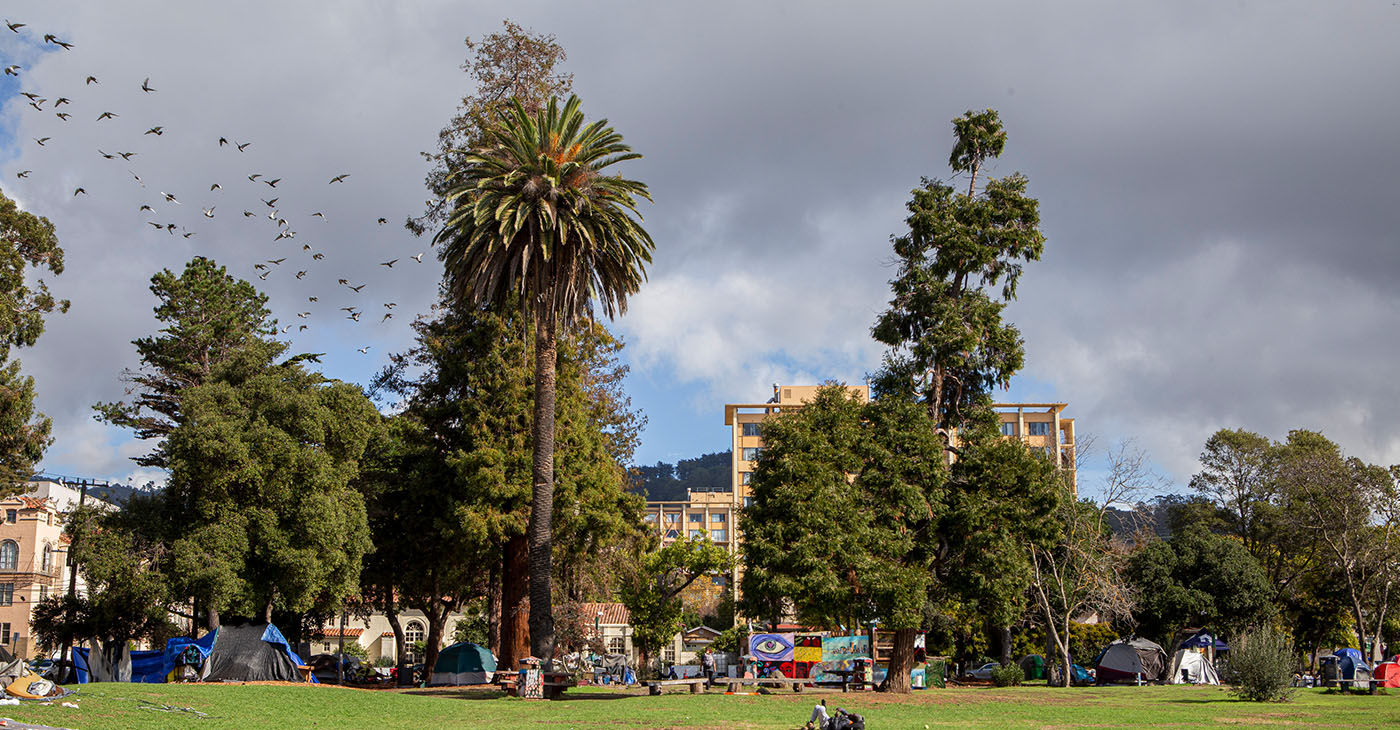
By Bay City News
Seven people were arrested early Thursday morning at Berkeley’s People’s Park as fencing was put up in preparation for a controversial construction project to build housing for students and formerly unhoused people on the public park.
Fencing and double-stacked shipping containers will continue to be installed over the next three to four days and surrounding streets will be closed off for about six days, according to a university spokesperson.
Opponents fought the University of California, Berkeley’s plan to build on the site when construction began in August 2022, but they were dealt a setback when Gov. Gavin Newsom signed a bill last year that was unanimously backed by the state Legislature to exempt the university from a requirement to consider alternative sites for the project.
The arrests Thursday morning were for trespassing, with two also arrested for failure to disperse, according to the university. They were cited and released after being booked into jail.
An appeal on the university’s construction project is still being heard by the state Supreme Court, but the university said it has the legal right to close off the construction zone while the case is litigated.
“Given that the existing legal issues will inevitably be resolved, we decided to take this necessary step now in order to minimize disruption for the public and our students when we are eventually cleared to resume construction,” UC Berkeley Chancellor Carol Christ said in a statement.
“Unfortunately, our planning and actions must take into account that some of the project’s opponents have previously resorted to violence and vandalism, despite strong support for the project on the part of students, community members, advocates for unhoused people, the elected leadership of the City of Berkeley, as well as the Legislature and governor of the state of California,” Christ said.
The plan calls for building housing for 1,100 students and a separate building with 100 apartments for low-income, formerly unhoused people, but activists have fought against the displacement of unhoused people currently living in the park and development on a green space.
The plan would preserve 60% of the 2.8-acre park’s green space and the park would remain open to the public. People living in the park have been offered transitional housing.
Video posted to social media showed trees being cut down and carried by heavy machinery overnight Wednesday into Thursday morning.
Copyright © 2024 Bay City News, Inc. All rights reserved. Republication, rebroadcast or redistribution without the express written consent of Bay City News, Inc. is prohibited. Bay City News is a 24/7 news service covering the greater Bay Area.
Bay Area
Appeals Court Denies Request to Revisit Berkeley’s Natural Gas Ban
The U.S. Court of Appeals for the 9th Circuit has ruled against Berkeley’s pioneering natural gas ban. In a majority decision filed Tuesday, the court said Berkeley’s ordinance banning gas pipelines in new construction runs afoul of the federal Energy Policy and Conservation Act.

By Kiley Russell
Bay City News
The U.S. Court of Appeals for the 9th Circuit has ruled against Berkeley’s pioneering natural gas ban.
In a majority decision filed Tuesday, the court said Berkeley’s ordinance banning gas pipelines in new construction runs afoul of the federal Energy Policy and Conservation Act.
The act “expressly preempts state and local regulations concerning the energy use of many natural gas appliances, including those used in household and restaurant kitchens,” Judge Patrick Bumatay wrote in the majority opinion.
“Instead of directly banning those appliances in new buildings, Berkeley took a more circuitous route to the same result,” Bumatay wrote. “It enacted a building code that prohibits natural gas piping in those buildings from the point of delivery at a gas meter, rendering the gas appliances useless.”
The Berkeley City Council unanimously approved the first-of-its-kind ordinance in July 2019.
It was designed to combat climate change by reducing natural gas emissions throughout the city by encouraging the use of more ecologically friendly electrical hookups.
“Climate change is an existential threat to our city, our homes, and our future,” Councilmember Kate Harrison, who authored the ordinance, said at the time. “It is time to take aggressive action to reduce our emissions across all sectors.”
The California Restaurant Association sued the city in November 2019, and in 2021 a lower court ruled against the restaurant organization.
In that ruling, the court found that the local ordinance didn’t conflict with federal regulations because it indirectly applied to appliances covered by federal law and that the federal rules should be interpreted so as not to “sweep into areas that are historically the province of state and local regulation.”
Last year, a panel of the 9th Circuit disagreed and ruled that federal law preempted the city’s new ordinance and on Tuesday, the full panel of judges denied a request to rehear the case.
Judge Michelle Friedland, writing the dissenting opinion for the 9th Circuit, said the majority opinion “misinterprets the statute’s key terms” and “needlessly blocks Berkeley’s effort to combat climate change, along with the equivalent laws passed by other local governments. Our system of federalism requires much more respect for state and local autonomy.”
Copyright © 2024 Bay City News, Inc. All rights reserved. Republication, rebroadcast or redistribution without the express written consent of Bay City News, Inc. is prohibited. Bay City News is a 24/7 news service covering the greater Bay Area.
Activism
Newsom Signs 56 Housing Bills to Boost Affordability, Help Tenants
Housing developments will now be more streamlined with less red tape, density laws can be overruled in the interest of housing, and institutions like colleges or religious organizations can now use portions of their property to build housing. Newsom also signed a bill that will please anyone who has tried to rent in California on a limited income: Landlords can now only collect one months’ rent as a security deposit instead of two.
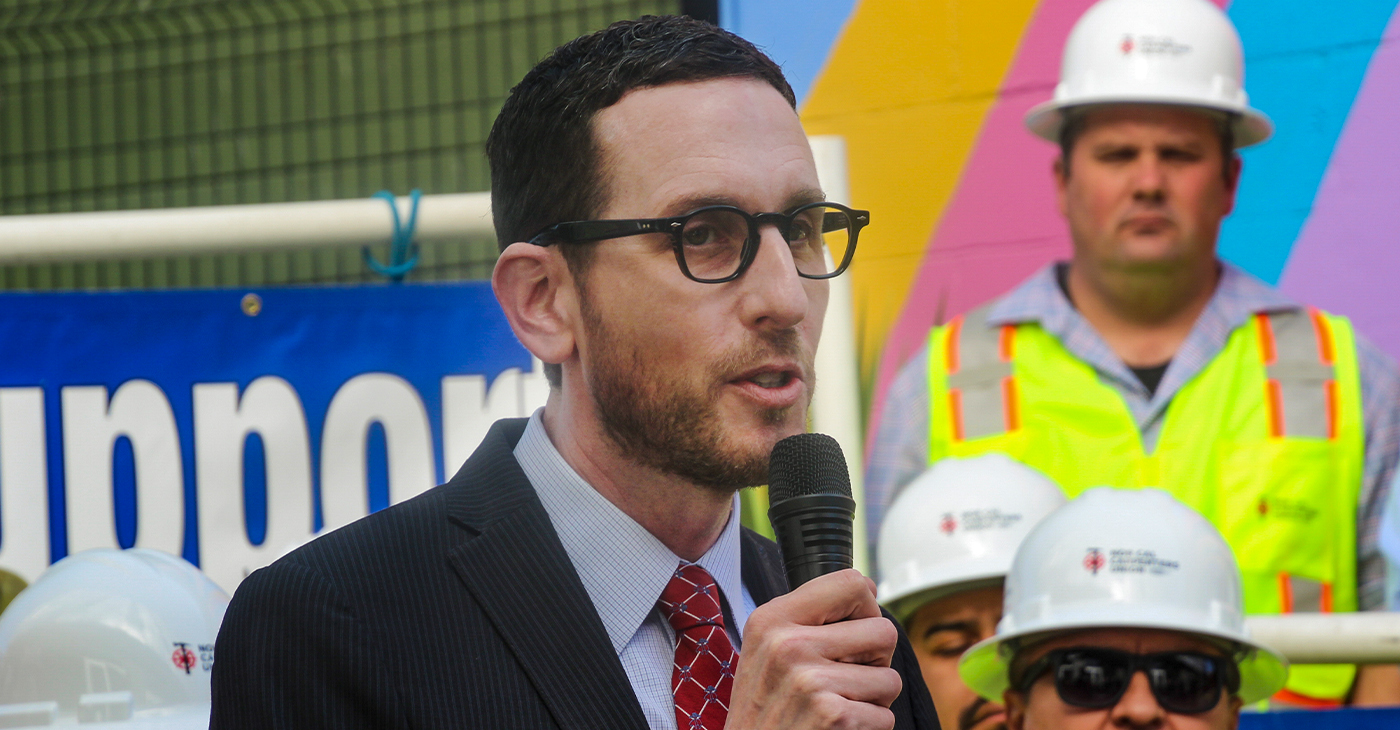
By Katy St. Clair | Bay City News
California Gov. Gavin Newsom on Wednesday signed multiple housing bills aimed at tackling the state’s lack of affordable housing and making it easier for tenants to rent a home in the first place.
Newsom signed a whopping 56 bills into law which he said, “incentivize and reduce barriers to housing and support the development of more affordable homes.”
Housing developments will now be more streamlined with less red tape, density laws can be overruled in the interest of housing, and institutions like colleges or religious organizations can now use portions of their property to build housing. Newsom also signed a bill that will please anyone who has tried to rent in California on a limited income: Landlords can now only collect one months’ rent as a security deposit instead of two.
State Sen. Scott Wiener (D-San Francisco) is especially pleased with the signings, as several of the bills were his, including creating a tax increment financing structure to replace 5,800 affordable homes in San Francisco that have been lost to redevelopment.
“California desperately needs to ramp up housing production and the Governor’s action today helps put us on a path to that goal,” said Wiener in a statement Wednesday.
Of Wiener’s bills, Newsom signed Senate Bill 423, which accelerates the development of affordable housing by strengthening the provisions of SB 35, which will sunset at the end of 2025. SB 35, another bill from Wiener back in 2016, allows projects to go through a simplified and expedited housing approval process in areas that are not on track to meet their housing production goals.
SB 423 continues the momentum of 35, but also includes “strong new labor standards,” such as higher wages and health benefits for workers on housing developments.
Wiener also put forth the San Francisco Replacement Housing Act, or Senate Bill 593, which aims to mend the mistakes of the past by adding affordable housing to neighborhoods that were demolished for growth, displacing their lower-income residents. According to Wiener, examples of these neighborhoods are Japantown, SoMA, and the Western Addition. SB 593 will create 5,800 affordable homes in the city, Wiener said.
Assembly Bill 12 was signed by the governor as well. Assemblymember Matt Haney (D-San Francisco) backed the bill, which expands tenant protections by limiting security deposits to one month’s rent in instead of up to three times the rent.
“Massive security deposits can create insurmountable barriers to housing affordability and accessibility for millions of Californians,” said Haney on social media Wednesday. “Despite skyrocketing rents, laws on ensuring affordable security deposits haven’t changed substantially since the 1970s. The result is that landlords lose out on good tenants and tenants stay in homes that are too crowded, unsafe or far from work.”
Other bills signed by Newsom establish penalties for CEQA abuse, allowing affordable accessory dwelling unit (ADU) condos, and expanding density bonuses, which give developers the ability to increase density above the maximum allowed in a municipality’s General Plan.
“It’s simple math,” said Newsom in a statement released by his office. “California needs to build more housing and ensure the housing we have is affordable.”
For a full list of all the housing-related bills signed by Gov. Newsom, go to http://leginfo.legislature.ca.gov.
-

 Activism4 weeks ago
Activism4 weeks agoOakland Post: Week of March 27 – April 2, 2024
-

 #NNPA BlackPress4 weeks ago
#NNPA BlackPress4 weeks agoCOMMENTARY: D.C. Crime Bill Fails to Address Root Causes of Violence and Incarceration
-

 #NNPA BlackPress4 weeks ago
#NNPA BlackPress4 weeks agoFrom Raids to Revelations: The Dark Turn in Sean ‘Diddy’ Combs’ Saga
-

 #NNPA BlackPress4 weeks ago
#NNPA BlackPress4 weeks agoCOMMENTARY: Lady Day and The Lights!
-

 #NNPA BlackPress4 weeks ago
#NNPA BlackPress4 weeks agoMayor, City Council President React to May 31 Closing of Birmingham-Southern College
-

 #NNPA BlackPress4 weeks ago
#NNPA BlackPress4 weeks agoBaltimore Key Bridge Catastrophe: A City’s Heartbreak and a Nation’s Alarm
-

 #NNPA BlackPress4 weeks ago
#NNPA BlackPress4 weeks agoBaltimore’s Key Bridge Struck by Ship, Collapses into Water
-

 #NNPA BlackPress4 weeks ago
#NNPA BlackPress4 weeks agoBeloved Actor and Activist Louis Cameron Gossett Jr. Dies at 87

